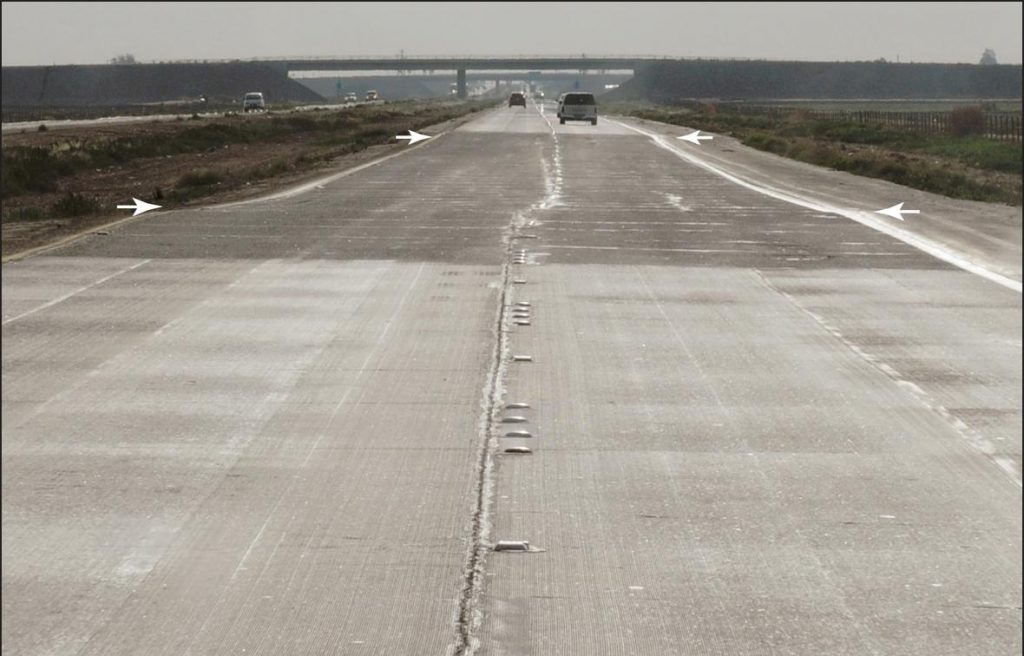11 June 2019–New mechanical modeling of a network of active strike-slip faults in California’s Imperial Valley suggests the faults are continuously linked, from the southern San Andreas Fault through the Imperial Fault to the Cerro Prieto fault further to the south of the valley.
Although more studies are needed to understand the slip rates and exact relationships between these faults, linkage could increase the likelihood that they might rupture together and cause larger than expected shaking in Los Angeles, Imperial, Riverside and San Bernardino counties in California, Jacob Dorsett and colleagues suggest in their analysis, published in the Bulletin of the Seismological Society of America.
While its faults may not be as well-known as the San Andreas and San Jacinto faults to the north, the region has hosted several damaging earthquakes, including a magnitude 6.9 rupture along the Imperial Fault in 1940 and a magnitude 6.6 earthquake on the same fault in 1979, along with magnitude 6.2 and 6.6 earthquakes on the Elmore Ranch and Superstition Hills faults, respectively, in 1989.
“We know that faults here have hosted earthquakes in the past, but understanding the three-dimensional fault shapes in the area, and specifically how the faults connect to and interact with one another, is necessary to better understand earthquake behavior. This project, to determine fault linkage and how it relates to fault slip rates here, is a necessary first step toward the future goal of mitigating risk,” said co-author Elizabeth Madden at Universidade de Brasília, who first advanced the idea of the BSSA study.
Dorsett, who worked on the study as an undergraduate at Appalachian State University and is now pursuing a Master’s degree at Indiana University, said the new analysis could prove useful to seismologists working on large-scale computational models to better forecast California earthquakes.
“Our work suggests that the San Andreas effectively does not end at the Salton Sea, but is most likely physically connected to the Imperial fault, and then to the Cerro Prieto fault in Mexico,” he said. “All other factors equal, if the San Andreas is connected to these other structures, then it makes the chances of a longer rupture–and a larger magnitude–more likely.”
The system of faults in the Imperial Valley accommodate most of the motion between the Pacific and North American tectonic plates in southern California. The complex spatial arrangement of the faults, however, makes it difficult to know whether this motion is mostly transferred via slip along major faults, or through significant off-fault deformation of the crust, Dorsett noted.

To better understand slip rates and linkage among these faults, the researchers created a suite of 3D models that simulate long-term Pacific-North American plate motion, basing the initial fault geometry on the SCEC Community Fault Model 5.0, a comprehensive database of known faults in southern California. They developed four geologically plausible fault configurations with different degrees of connectivity between the Imperial fault and the Coachella (southern) part of the San Andreas Fault to the north and to the Cerro Prieto fault in the south.
They then compared slip rates along those faults, as suggested by the mechanical models, with average fault slip rates calculated by the Uniform California Earthquake Rupture Model version 3, or UCERF3, the most recent earthquake rupture forecast for California.
Their model results suggest the Coachella-San Andreas Fault, the Brawley Seismic Zone, the Imperial Fault and the Cerro Prieto fault are mechanically linked and form a continuous fault structure.
The analysis also suggests that the Dixieland fault in the west part of the valley, in particular, may accommodate a more significant part of the plate motion than previously suspected, Dorsett noted, while the models also indicate that there may be a significant amount of seismic strain that occurs off of the faults.
“Like others before us, we definitely suspected that there could be faults linking the San Andreas to the Imperial and Cerro Prieto faults, and it’s great that our study suggests that these linking faults are needed to correctly capture the plate motions,” said Dorsett.
